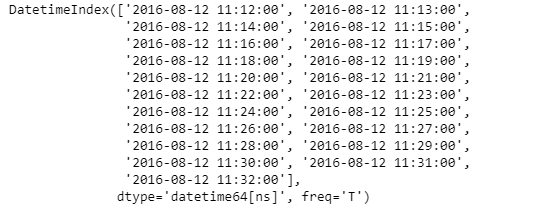Python| Pandas PeriodIndex.start_time
Python是一种用于进行数据分析的出色语言,主要是因为以数据为中心的Python包的奇妙生态系统。 Pandas就是其中之一,它使导入和分析数据变得更加容易。
Pandas PeriodIndex.start_time属性返回一个 DatetimeIndex 对象,其中包含给定 PeriodIndex 对象中每个周期元素的开始时间。
Syntax : PeriodIndex.start_time
Parameters : None
Return : DatetimeIndex object
示例 #1:使用PeriodIndex.start_time属性找出给定 PeriodIndex 对象中每个周期的开始时间。
# importing pandas as pd
import pandas as pd
# Create the PeriodIndex object
pidx = pd.PeriodIndex(start ='2004-11-21 02:45:21 ',
end ='2004-11-21 8:45:29', freq ='H')
# Print the PeriodIndex object
print(pidx)
输出 : 
现在我们将使用PeriodIndex.start_time属性来找出 pidx 对象中每个周期的开始时间。
# return the start time
pidx.start_time
输出 : 
正如我们在输出中看到的, PeriodIndex.start_time属性返回了一个 DatetimeIndex 对象,其中包含给定 PeriodIndex 对象中每个周期的开始时间。示例 #2:使用PeriodIndex.start_time属性找出给定 PeriodIndex 对象中每个周期的开始时间。
# importing pandas as pd
import pandas as pd
# Create the PeriodIndex object
pidx = pd.PeriodIndex(start ='2016-8-12 11:12:02',
end ='2016-08-12 11:32:12', freq ='T')
# Print the PeriodIndex object
print(pidx)
输出 : 
现在我们将使用PeriodIndex.start_time属性来找出 pidx 对象中每个周期的开始时间。
# return the start time
pidx.start_time
输出 : 
正如我们在输出中看到的, PeriodIndex.start_time属性返回了一个 DatetimeIndex 对象,其中包含给定 PeriodIndex 对象中每个周期的开始时间。